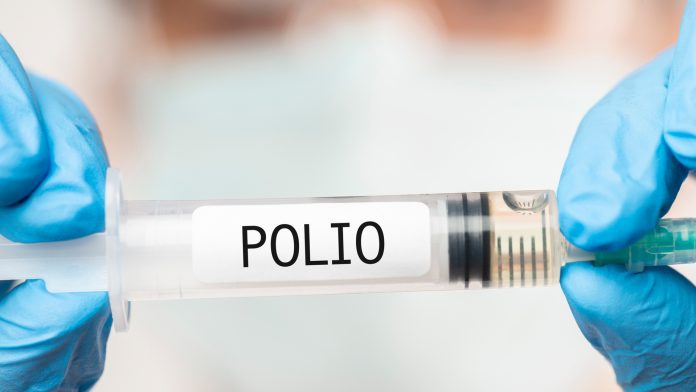
What is polio? Health Europa brings you everything you need to know about the disease, its origins, symptoms, how you can catch it, and most importantly, how to avoid and treat it.
Polio has become a prominent topic recently, with the UK Health Security Agency (UKHSA) revealing that they have detected polio in various sewage samples in London, although there are currently no reported cases of the disease. This has prompted many unfamiliar with the condition to ponder, what is polio? Here, Health Europa explains everything you need to know about polio.
What is polio?
Polio – otherwise known as poliomyelitis – is a potentially life-threatening viral infection caused by the poliovirus that predominantly affects young children. Some evidence suggests polio has existed for millennia, with some claims that the disease was prevalent in ancient Egyptian times. However, polio epidemics were not documented until the later 19th century.
The World Health Organization (WHO) reports that Since 1988, overall cases of wild poliovirus have reduced by 99%, from around 350,000 cases in over 125 endemic countries to 175 reported cases in 2019.
Currently, polio is eradicated in most parts of the world, with the virus only endemic in two countries – Pakistan and Afghanistan.
How can you catch polio?
Polio enters the body through the mouth via person-to-person contact and thrives in an infected person’s intestines and throat. Polio is primarily transmitted by contacting an infected person’s faeces or droplets from sneezing or coughing.
An infected person can start spreading polio for around two weeks before experiencing symptoms, with asymptomatic patients – people who do not display symptoms of the virus – still able to infect other people. Polio can live in the faeces of an infected individual for several weeks and can contaminate food and water.
What are the symptoms?
Research suggests that around 70% of people infected with polio will not show visible signs of the infection, with 25% having flu-like symptoms that usually resolve after five days. These symptoms include nausea, abdominal pain, fever, sore throat, tiredness, and headache.
In an extremely rare number of cases, patients can develop severe symptoms that impact the spinal cord and brain, including paraesthesia, meningitis, and paralysis, resulting in long-term disability or death.
Prevention and treatment
The NHS recommends the most effective way to prevent polio is by getting routine childhood vaccinations against the virus. These immunisations are administered when a child is eight, 12, and 16 weeks old as part of the 6-in-1 vaccine, at three years and four months old through the 4-in-1 (DTaP/IPV) pre-school booster, and at 14 years via the 3-in-1 (Td/IPV) teenage booster.

Although there is no cure for polio, some strategies for mitigating its symptoms exist. These include drinking plenty of fluids, muscle-relaxing drugs, anti-inflammatory medications, physical therapy, mechanical ventilation, and rest.
























